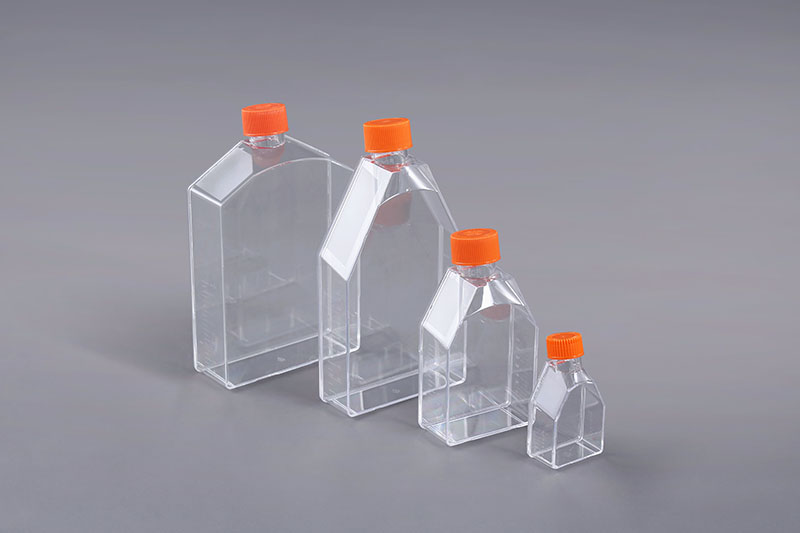How to use cell culture flasks to detect E. coli colonies
Coliform bacteria refer to a group of gram-negative non-bacillus bacteria that can ferment lactose, produce acid and gas, aerobic and facultative anaerobic. In practical applications, it is often used as an indicator of whether food is contaminated by feces. Among all the detection methods, the use of cell culture flasks for detection is the more commonly used one. The operation steps are as follows:
1. Sampling and dilution
(1) According to the aseptic method, put 25g (or 25mL) of the test sample in a cell culture flask containing 225mL sterile water (preset appropriate number of glass beads in the flask) or a sterilized mortar, and shake it thoroughly. Or grind to make a uniform dilution of 1:10. It is best to use a sterile homogenizer for solid samples and centrifuge at a speed of 8000~10000r/min for 1 min to make a 1:10 dilution.
(2) Use a 1mL sterile straw to suck 1Ml of 1:10 dilution, pour it into a test tube containing 9mL of sterile water, shake and mix to make a 1:100 dilution, replace with a 1mL sterile straw, press The above operations are successively made 10 times serial dilutions.
(3) According to the food hygiene requirements or the estimation of the contamination of the test samples, select three dilutions and inoculate 3 tubes for each dilution. It can also be inoculated directly with the sample.
2. Initial fermentation test of lactose
This is commonly referred to as hypothetical testing. Its purpose is to check the sample for bacteria that ferment lactose to produce gas. The sample to be tested is inoculated into the lactose bile salt fermentation tube, the double lactose bile salt fermentation tube is used for the inoculum above 1 mL; the single lactose bile salt fermentation tube is used for the 1 mL and less than 1 mL. Inoculate 3 tubes for each dilution and place them in a 36±1℃ incubator for 24±2h. If all the lactose bile salt fermentation tubes do not produce gas, it can be reported as negative for coliform bacteria. If there is gas producing, then Follow the procedure below.
3. Separation culture
The gas-producing fermentation tubes were streaked and inoculated on eosin methylene blue agar plates, and cultured in an incubator at 36±1°C for 18-24 hours. Then, the colony morphology was observed and Gram staining, microscopic examination and re-fermentation test were performed.

4. Lactose double fermentation test
The so-called confirmation test, whose purpose is to prove that the gram-negative non-bacillus bacteria isolated from the test tube that was positive in the initial lactose fermentation test can indeed ferment lactose to produce gas. On the above-mentioned selective EMB medium, pick 1 to 2 suspicious coliform colonies for Gram staining, and inoculate lactose fermentation tubes at the same time, and place them in a 36±l°C incubator for 24±2 hours to observe the gas production. . Where the lactose fermentation tube produces gas and the gram stain is negative, Bacillus-free bacteria are reported as positive for coliforms; where the lactose fermentation tube does not produce gas or the gram stain is positive, it is reported as negative for coliforms.
The above is the operation method of using cell culture flasks to detect E. coli group indicators. Escherichia coli is an important indicator that reflects whether food is contaminated. Mastering the detection method is a basic skill that every food inspector should possess.
评论
发表评论